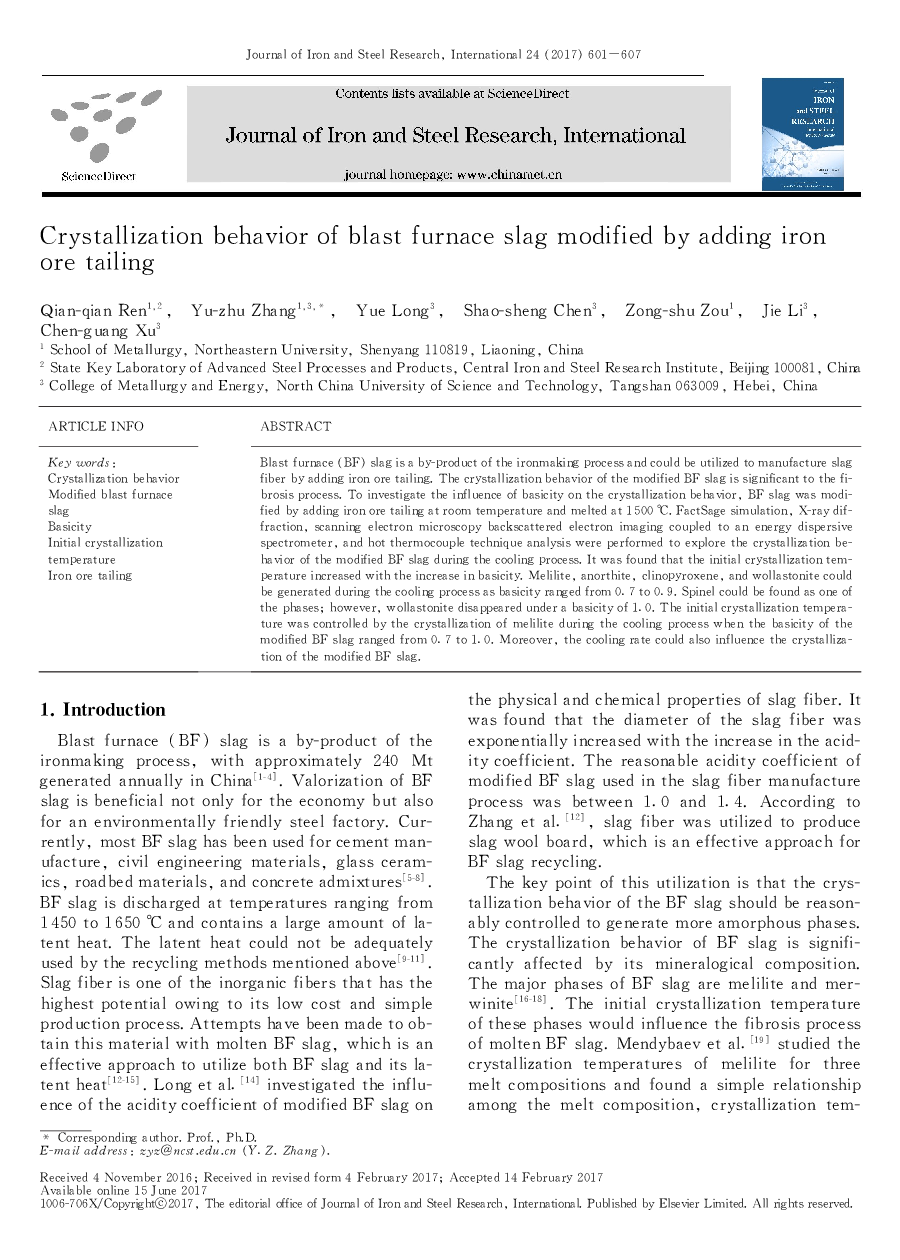| Article ID | Journal | Published Year | Pages | File Type |
|---|---|---|---|---|
| 8004247 | Journal of Iron and Steel Research, International | 2017 | 7 Pages |
Abstract
Blast furnace (BF) slag is a by-product of the ironmaking process and could be utilized to manufacture slag fiber by adding iron ore tailing. The crystallization behavior of the modified BF slag is significant to the fibrosis process. To investigate the influence of basicity on the crystallization behavior, BF slag was modified by adding iron ore tailing at room temperature and melted at 1500 °C. FactSage simulation, X-ray diffraction, scanning electron microscopy backscattered electron imaging coupled to an energy dispersive spectrometer, and hot thermocouple technique analysis were performed to explore the crystallization behavior of the modified BF slag during the cooling process. It was found that the initial crystallization temperature increased with the increase in basicity. Melilite, anorthite, clinopyroxene, and wollastonite could be generated during the cooling process as basicity ranged from 0.7 to 0.9. Spinel could be found as one of the phases; however, wollastonite disappeared under a basicity of 1.0. The initial crystallization temperature was controlled by the crystallization of melilite during the cooling process when the basicity of the modified BF slag ranged from 0.7 to 1.0. Moreover, the cooling rate could also influence the crystallization of the modified BF slag.
Related Topics
Physical Sciences and Engineering
Materials Science
Metals and Alloys
Authors
Qian-qian Ren, Yu-zhu Zhang, Yue Long, Shao-sheng Chen, Zong-shu Zou, Jie Li, Chen-guang Xu,
